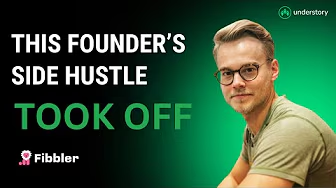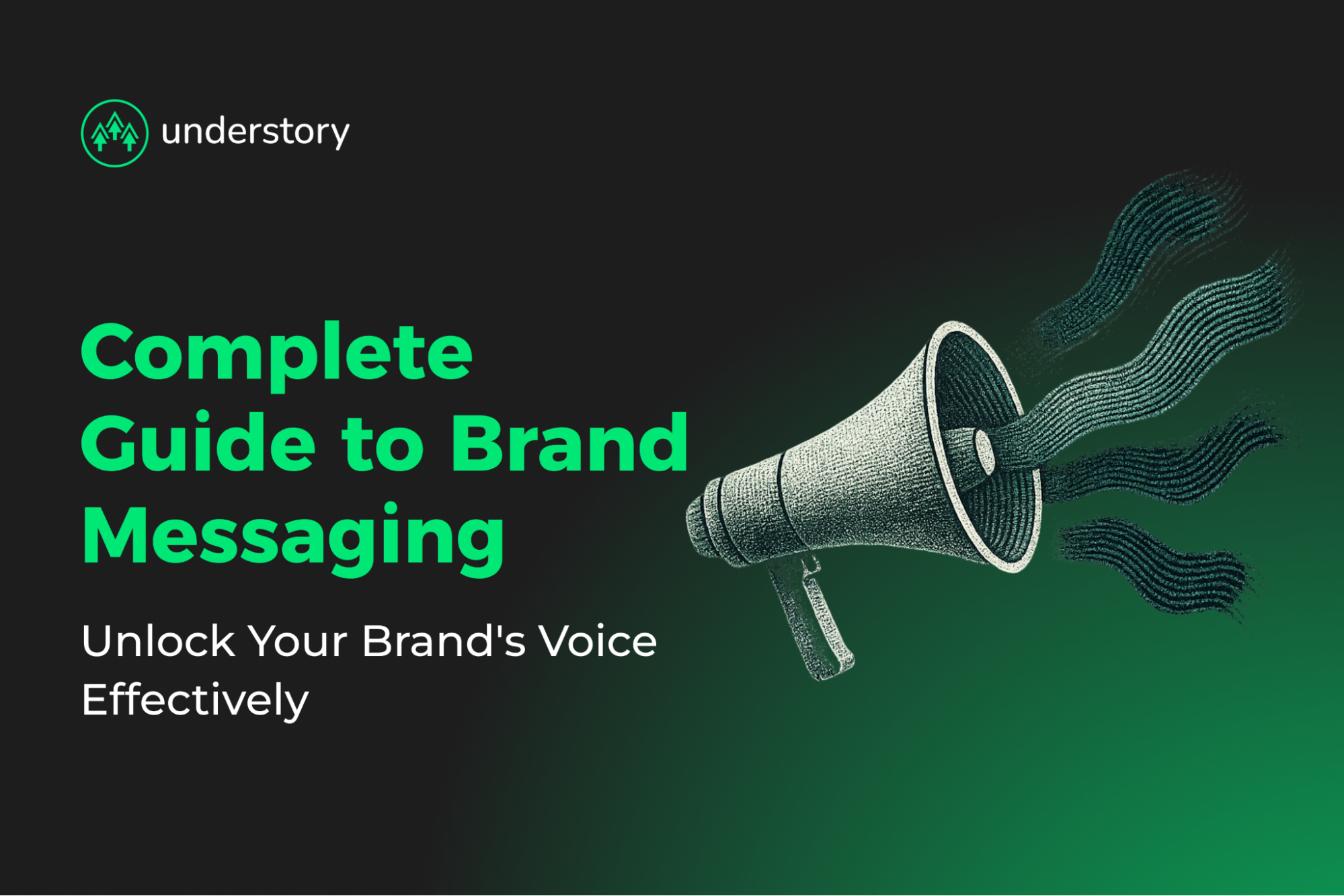
From Zero Customers to Series A: HockeyStack's Wild Journey
Catch up on our Understory Unfiltered episode sharing the story of HockeyStack
Catch up on our Understory Unfiltered episode with Adam Robinson about improving your ARR when it plateaus
Adam Robinson, CEO and founder of RB2B and Retention.com, runs $25M ARR across two bootstrapped SaaS companies with extraordinary efficiency (hitting $10M ARR with just six people at one point). Robinson has mastered the art of getting unstuck when growth stalls, using product-first thinking and authentic distribution to break through revenue plateaus.
Listen to this episode to learn how product focus beats marketing when you're stuck, why niching down saved his e-commerce business from $13M to $23M ARR, and how building an authentic LinkedIn audience creates valuable distribution advantages for B2B founders.
Adam Robinson is the CEO and founder of RB2B and Retention.com, running $25M ARR across two bootstrapped SaaS companies. Before building his current businesses, Robinson achieved $10M ARR with just six people at Retention.com, demonstrating extraordinary operational efficiency.
He's built a LinkedIn following of approximately 130,000 through brutally authentic content about the realities of SaaS scaling, revenue challenges, and product-market fit struggles. Robinson's public revenue dashboard at rb2b.barometrics.com exemplifies his transparent approach to building in public, creating distribution advantages most founders can't replicate.
[02:36] The $25M ARR reality: revenue split between RB2B and Retention.com, plus e-commerce seasonality
[04:02] Retention versus RB2B growth dynamics: why Robinson stopped marketing one product entirely
[06:12] Getting unstuck methodology: when to stop marketing and focus entirely on product
[13:55] Distribution without massive followings: advice for founders with 500 LinkedIn followers
[16:49] The $13M to $23M breakthrough: niching down to big Shopify stores for exponential growth
[18:07] Finding team leverage: how Robinson discovered Santos, Diana Ross, and Pete
[19:02] Polarizing authenticity: why controversy and criticism accelerate distribution
[28:01] Cracking the inner circle: how top Shopify stores create viral adoption through word-of-mouth
[32:35] Team leverage across companies: maximizing talent ROI with versatile team members
Robinson's approach to breaking through revenue plateaus focuses entirely on product improvement rather than marketing optimization. "Great marketing is not helpful if the product sucks. It's only going to get you so far. And then if the product's great, great marketing is an incredible complement to it," Robinson explains.
When RB2B hit growth challenges, he stopped all marketing channels and fixed core product issues: perceived accuracy, filtering and routing problems, and the "what now" challenge users faced after getting leads. This product-first mindset helped him scale Retention.com from $13M to $23M ARR by niching down to big Shopify stores.
Robinson candidly admits that both his products fall into higher-churn categories because they're not mission-critical workflows. "These products that I currently sell, they're not sticky by the definition of SaaS products. They're categorically when you're selling leads or intent data as a SaaS, that is going to be higher churn than if you were selling a CRM," he notes.
Getting stuck means going backwards due to churn dynamics, requiring constant product evolution to maintain growth. The solution isn't fighting this reality but designing products and business models that account for it.
Robinson's LinkedIn following of approximately 130,000 creates massive distribution advantages, but he emphasizes the difficulty of authentic social media presence. "It's just very hard for people in general to be authentic on social media. On Instagram, everyone needs to look skinny and rich. On LinkedIn, they have to be smart and successful," Robinson observes.
Many CEOs can't replicate his approach because they have investors or worry about perception. His willingness to share struggles, revenue numbers, and controversial opinions creates engagement that translates to qualified leads. This authenticity is a strategic business decision creating unfair competitive advantages.
As we discuss in the episode, the bootstrap founder's constraint becomes an advantage when getting unstuck. Without excess capital to mask product issues, you're forced to confront reality earlier. Robinson's willingness to stop all RB2B marketing when the product wasn't ready demonstrates this discipline.
For bootstrap founders with 500 LinkedIn followers, the path forward isn't trying to replicate Robinson's distribution advantages. Focus on the smallest viable segment where your product delivers undeniable value, then let that success create organic word-of-mouth. Marketing amplification only works when the underlying product experience justifies it.
Robinson's biggest breakthrough came from understanding how influence spreads in the Shopify ecosystem. "It's such a tight community. It's like these 2,000 stores at the top of that ecosystem and they all do what all of them are doing at the exact same time. So it gives you this hockey stick," he explains.
Accessing this network requires extraordinary product-market fit first. You need critical mass of admired brands seeing 10x ROI within 30 days before word-of-mouth takes over. This dynamic exists in many B2B verticals, but most founders try to force their way in rather than earning entry through undeniable product value.
Rather than avoiding conflict, Robinson engages directly with critics like Clark Barron. His strategy: respond to criticism while staying focused on business fundamentals. "I respond to him. It's not like I ignore it. I'm just like, bro, I don't know what to tell you. I'm an entrepreneur. I saw a hole. I filled it," Robinson explains.
This approach turns critics into inadvertent marketing channels while positioning him as the authentic voice in a space full of polished corporate messaging. The key is remaining law-abiding and ethical while being willing to defend your decisions publicly.
At Retention.com's peak efficiency, Robinson hit "$10 million ARR with six people," demonstrating extraordinary leverage through product-market fit and operational focus. This wasn't just lean staffing but a systematic focus on high-impact activities while avoiding premature scaling.
Robinson's bootstrap approach forced efficient resource allocation and rapid product iteration. This efficiency becomes a competitive advantage when growth stalls, providing runway to experiment and iterate without burning cash on overhead. Most SaaS companies hire ahead of revenue, missing this crucial advantage.
"The first quarter is really hard for the e-commerce side because if you were going to cancel something, you leave it on through the holidays and you cancel it in the first quarter," Robinson explains. Companies then spend Q2 and Q3 implementing growth plans for the next holiday season, creating predictable revenue cycles.
Robinson describes this as the "lunar calendar" for e-commerce versus the "solar calendar" for B2B. With 80% of revenue from e-commerce, understanding these industry-specific patterns helps with cash flow planning and prevents hasty decisions during natural seasonal dips.
Diana Ross, Robinson's key sales hire, delivers value beyond closing deals by gathering product intelligence from prospect conversations. "Part of her magic is that she gets a ton of product insight from just doing sales with a bunch of different types of people. And she can sort of keep all this straight in her head of who she's talking to and the kind of thing they need and what we might want to build," Robinson notes.
This feedback loop between sales and product development creates rapid iteration cycles and helps identify the highest-value features to build next.
When Robinson recognized RB2B's product limitations, he made the counterintuitive decision to halt all marketing efforts. "If I don't think the product is good, then I'm burning leads by trying to shove people through this funnel on something that is not yet good enough," he explains.
This approach requires confidence in your ability to restart demand generation, but it prevents poisoning your market with poor experiences that create negative word-of-mouth. Signups dropped to 60% of peak levels, but Robinson views this as necessary rather than failure. Most founders keep pushing marketing hoping to find product-market fit through volume.
Robinson strategically uses key team members across both businesses, with Diana Ross handling sales for both companies and Pete contributing to RB2B while heading a community effort. This approach maximizes talent ROI while creating knowledge transfer between products.
"Pete's great. And he's heading this community effort right now, which is kind of like a side hustle that hopefully we can start to get some pretty good funnels going for," Robinson shares. The key is finding versatile team members who can contribute across multiple initiatives without spreading focus too thin.
Want more insight on cutting edge SaaS growth tactics? Listen to the full episode on YouTube and subscribe to Understory's podcast for more episodes on SaaS scaling and product-market fit strategies.
Stuck at your own plateau? Book a call with Understory to explore how coordinated paid media, outbound, and creative can break through your growth constraints without the specialist coordination overhead that's consuming your strategic time.

Catch up on our Understory Unfiltered episode sharing the story of HockeyStack

Catch up on our Understory Unfiltered episode sharing the story of Fibbler

